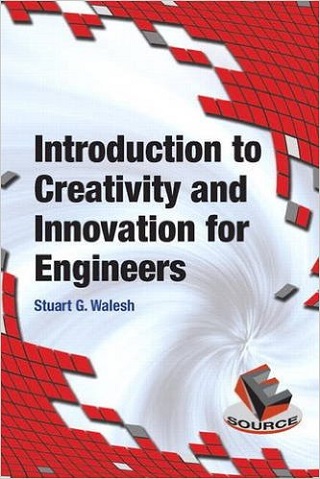
Having valued the clarity of presentation in Stuart "Stu" Walesh's webinars on engineering management at asce.org, I reached out to him in early January 2015 to enquire about his interest in creativity and innovation in the engineering industry, a topic he highlighted on his online profile. Turns out he was at work on his book, Introduction to Creativity and Innovation for Engineers for Pearson Education. Subsequently, I previewed and offered feedback on his manuscript in the first quarter of 2015 when the book was still under development. The book was officially released on January 13, 2016.
Stu's professional experience of over 40-years in engineering includes employment as professor and dean at a US engineering college and as contributor to ASCE's professional education programs. Stu was motivated to write this book after critically examining the Civil Engineering Body of Knowledge (CEBOK) published by ASCE and the curriculum commonly taught in US engineering schools.
He observed that engineering college curriculum and CEBOK lack exposure to methods that spark creativity. In the Preface he writes that deferring exposure to tools that spark creativity may cause two problems:
- Creative students drawn to engineering due to the fascinating solutions they see engineers build may lose interest in engineering when all they are exposed to during their early college years are analytical subjects.
- Students steeped in the study of only analytics may find it difficult to harness their creativity because the latter relies on the study of human cognition (How We Know), which is integration, and not analysis.
Why is it important to address these problems? He answers this question by quoting journalist Geoff Colvin, "In a world of forces that push toward the commoditization of everything, creating something new and different is the only way to survive."
On page 6 of Chapter 1 in Section 1.4.2 the author summarizes information from a variety of sources about the future direction of “knowledge work.” Think of "knowledge work" as the product of civil engineering knowledge, like analysis or computations, that can be automated or completed by cheaper labor abroad. The author contends that such “knowledge work” will not be the value civil engineers in developed nations deliver in the future. The value civil engineers deliver will be of a different type for the same type of project and that work will require the synthesis of work from many more specializations than before. This is consistent with what ASCE’s Vision 2025 document projects as well.
By raising the red-flag about the state of engineering education, Stu is standing up against a prevalent system that is broken. He deserves kudos for whipping up the motivation required to research creativity over several years to compile the fodder necessary to challenge ASCE’s Civil Engineering Body of Knowledge’s lack of focus in the area of creativity, an area that is necessary for civil engineers to play a role in solving the grand challenges of engineering (Engineering Challenges).
Subject and Theme
The book is a celebration of engineering accomplishments and of the human brain's capacity to conceive and build them. It is also an introduction to the basics of recent developments in neuroscience (scientific study of the nervous system) and to methods that harness the whole brain, both the left (logical) and right (creative). The underlying theme permeating the book is the idea that creative thought need not be an unpredictable bolt of inspiration; it is a learnable skill that must be cultivated deliberately by engineers to successfully tackle grand challenges now and in the future.
Audience
The book addresses engineering educators looking for ways to attract and keep intelligent kids to the profession. It also addresses those interested in learning and teaching concepts and methods of creative thought.
I do not think a non-motivated student can learn on his own from this book because he will not find the book interesting. A student must already be highly motivated by the subject itself to extract full value from the book. I equate motivated students to the audience (CEBOK editors, and educators/business owners embarking on a vital change they care about) in the above paragraph. The motivated student is sure to enjoy the fascinating engineering examples the author has carefully sprinkled throughout the book and also in the very well thought-out exercises he has hand-picked for the exercises. Might I say, a motivated student with an interest in sketching and drawing is likely to also be awed, as I was, by the gorgeous pencil sketches the author himself created and included in the book.
Assessment
If you already have, or wish to secure a role in updating ASCE's CEBOK, this book will prove invaluable in motivating you to consider the ways in which creativity can be fostered in engineering curriculum. If you’re charting a new direction for your civil engineering firm as a business owner; or if you’re looking to change the curriculum of the civil engineering class you teach in college as a professor, the ready access to sources in the extensive bibliography along with the introduction to concepts covered in this book will prove valuable.
If you’re a civil engineering student, you will need a great teacher to help you get through this material. This book can be used for self-study as it expertly compiles invaluable material as noted above; however, most students who lack significant engineering work experience are likely to find the sequence of presentation, and the depth of content, problematic because I think it will not help them get through the book on their own with a focused mind. I say this because a necessary ingredient in the proper education of the young mind (The Philosophy of Education) is contextual motivation. I did not find enough of this ingredient in the book and think more of the ingredient is necessary to help a young engineer kindle the spark of motivation in his own mind to stay focused. A great teacher with an interest in this subject will be required to provide that missing ingredient.
